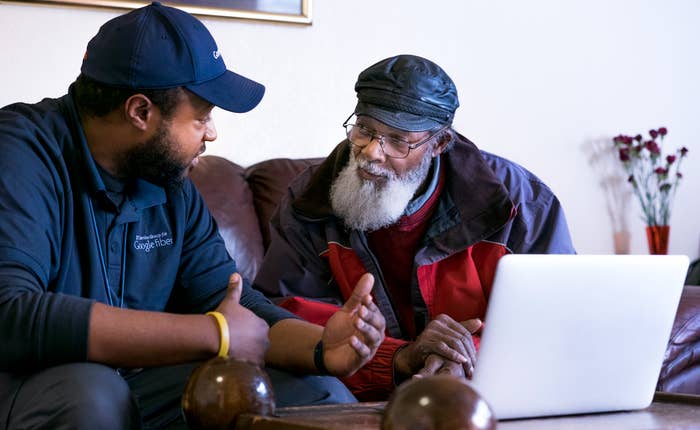
Internet service for a public housing community in Kansas City, Missouri, is about to radically improve.
Google Fiber will unveil the start of an initiative Wednesday to bring free, gigabit-speed internet to low-income residents in every city where it operates. The internet service and its upkeep will be paid by Google, at no cost to the families using it, or to the housing authorities partnering with the company.
A community of townhouses called West Bluff, where 100 families reside, will be the first to receive the service, in partnership with the Kansas City Housing Authority. Each household will be wired with a fiber jack and a Wi-Fi box. And residents will be able to purchase discounted devices from Connecting for Good and Surplus Exchange.
About 260 people live at West Bluff, according to Edwin Lowndes, executive director of the Housing Authority. The average income of families there is less than $10,000 per year, and 85% of the residents self-identified as African American. While major internet providers are located in the general area, Lowndes told BuzzFeed news that West Bluff was never previously connected.
"This is the first step in bringing full internet accessibility to the families that live in public housing," he said. "We are excited and very proud to work with Google Fiber on this project."
Google’s plans are part of a broader White House effort, announced last summer, to close the “digital divide” by bringing free and low-cost broadband access to disadvantaged Americans. Dubbed ConnectHome, the pilot program launched in 27 cities across the United States, connecting 275,000 publicly assisted households and nearly 200,000 children.
The West Bluff property will be Google’s first free gigabit-speed-connected community, but the company plans to extend the service to nine other neighborhoods in the Kansas City metro area, eventually wiring 1,300 homes.
Erica Swanson, Google Fiber’s head of community, told BuzzFeed News that most of the households the company has worked with in the ConnectHome initiative have not had internet access in the past. “We know that affordability is one of the largest barriers,” she said. “We are really focused on reaching those who are most in need and making the internet truly affordable.”
Nearly 34 million Americans lack access to the internet, according to the Federal Communications Commission. Last week, the FCC shared details of its 2015 annual broadband progress report. In addition to the disconcerting fact that about 10% of the country lives unconnected, the agency concluded that wireless connectivity remains an inadequate substitute to fixed broadband within households. Americans who connect solely through mobile devices tend to do less online, likely face higher fees, and more often forgo use of the web, the agency found.
For the Department of Housing and Urban development, the federal agency spearheading ConnectHome, enhancing access to the internet is one way to boost the economic prospects of Americans who need it most.
“There’s a national conversation going on, driven out of Silicon Valley, thinking about expanding the pipeline of talented future employees,” HUD Secretary Julian Castro told BuzzFeed News. “What better place to start than public housing residents — young people who are low income but have the same big dreams as everybody else.”
Castro said he hopes to expand the gigabit efforts in Kansas City and the broader ConnectHome initiative in this final year of the Obama administration.
